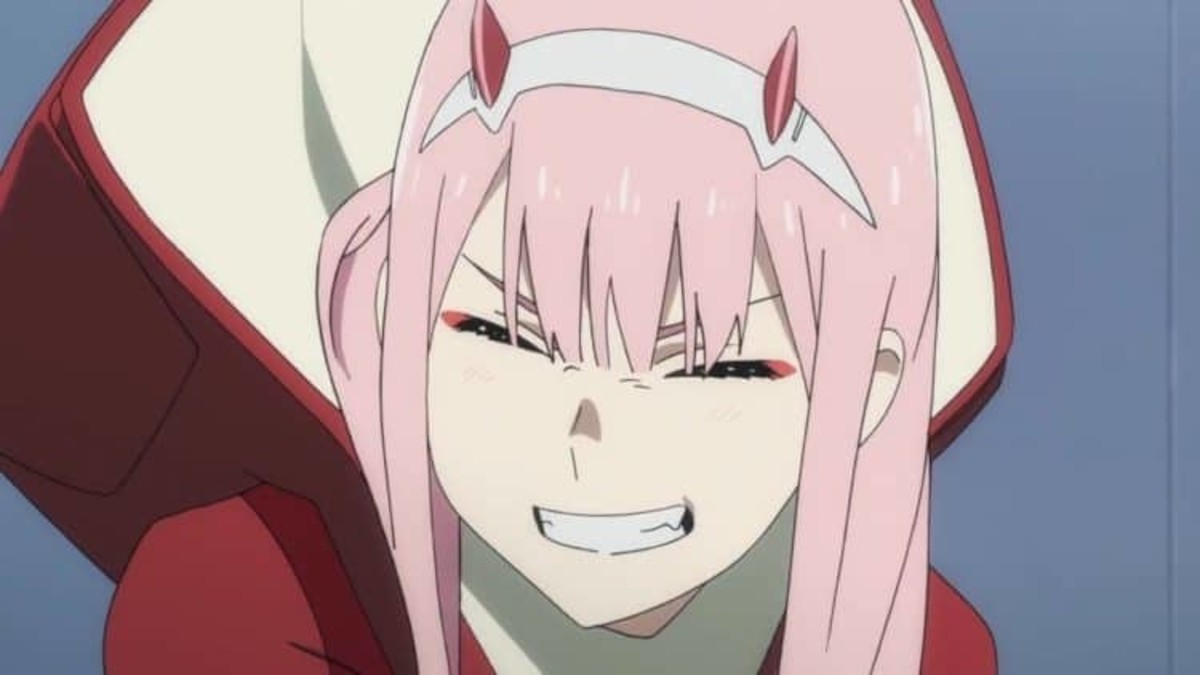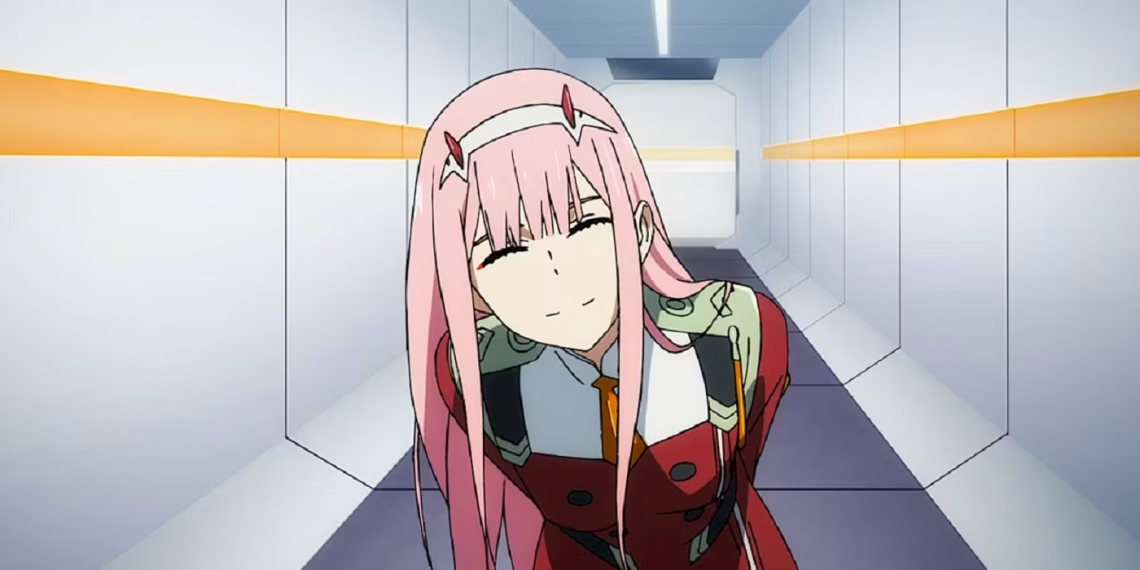“Darling in the Franxx” is a 2018 sci-fi anime that has stirred intense debates within the anime community. Combining thrilling action sequences, psychological depth, and a hefty dose of philosophical questions, this series quickly gained a massive fan base—and just as many detractors. Set in a post-apocalyptic future, the story follows a group of young pilots tasked with operating giant mechas to fend off monstrous creatures known as “Klaxosaurs.” The central theme of “Darling in the Franxx” revolves around identity, relationships, and the consequences of a society built on survival at any cost.
However, despite its gripping premise and visually stunning animation, the anime faces criticism for its handling of complex themes like human sexuality, emotional dependency, and the portrayal of relationships. With bold characters and emotional twists, “Darling in the Franxx” presents itself as an anime that is hard to ignore—whether loved or hated, it commands attention. But does it succeed in offering something more than just eye candy and action-packed scenes? Or does it fall short in terms of narrative depth and character development? This review explores the intricacies of “Darling in the Franxx” and why it continues to provoke strong opinions among fans and critics alike.
The Premise: A Dystopian Future and the Franxx Mechs

At the heart of “Darling in the Franxx” is the concept of mechas—giant robots piloted by young pairs, which is a direct nod to classic mecha anime. These pairs, typically made up of a male and female pilot, control their Franxx (the mechas) using a unique bond that mirrors a romantic or emotional connection. The anime presents a dystopian world where the remnants of humanity live in isolated cities, constantly battling Klaxosaurs. The youth of this society are trained to pilot these mechas to ensure the survival of humanity, and as the story unfolds, the themes of sacrifice, survival, and the price of human connections become central.
The pilots’ reliance on each other to operate the mechas draws upon themes of cooperation, trust, and intimacy. The idea of pairing young, emotionally vulnerable characters with a necessity for emotional bonding creates a tension that is both poignant and, for some, uncomfortable. The series uses this bond to explore various aspects of human relationships, including dependency, loneliness, and a search for meaning in a world ravaged by chaos.
Complex Characters: Relationships, Development, and Controversies
Zero Two: The Complicated Heroine
Zero Two is undeniably one of the most iconic characters in the series. She is a half-human, half-Klaxosaur hybrid, and her relationship with the protagonist, Hiro, is central to the story. Zero Two’s character arc is rich with emotional turmoil, self-discovery, and a struggle for acceptance. However, her relationship with Hiro also sparks significant controversy, particularly around the portrayal of their dynamic.
Critics have pointed out that the show at times borders on problematic in how it presents the power dynamics between Hiro and Zero Two. Zero Two’s actions, which are often impulsive and aggressive, are depicted as signs of deep emotional pain, but her behavior raises concerns about unhealthy relationship dynamics. Her character arc, which involves a transition from an emotionally distant and aggressive persona to someone capable of love and vulnerability, is often seen as a comment on self-worth, but for some viewers, it feels like an uncomfortable portrayal of romanticized toxicity.
Hiro: The Reluctant Protagonist
Hiro’s character arc is less dramatic but equally significant. As the “zero” pilot, Hiro begins as a failed candidate who struggles with his sense of purpose. His bond with Zero Two provides him with a sense of identity and meaning, making him one of the more traditional “hero” characters in the series. However, Hiro’s development is often overshadowed by his relationship with Zero Two, making it harder for viewers to fully grasp his evolution outside of this context.
Themes of Identity, Sexuality, and Emotional Dependency

One of the most divisive aspects of “Darling in the Franxx” is its handling of complex themes such as human sexuality, emotional dependence, and the meaning of relationships in a broken world. The anime’s premise revolves around the concept of “pairing” pilots who must form an intimate bond to operate their mechas. This forced emotional connection blurs the lines between romantic and platonic relationships, and its depiction has sparked debates about the implications of sexualizing young characters and the nature of these relationships.
Some viewers have interpreted the show’s exploration of intimacy and dependence as a critique of modern relationships and societal pressures, while others see it as exploitative or unnecessarily provocative. This duality has led to polarized opinions on the anime, with some lauding it for tackling difficult themes and others criticizing it for making light of serious emotional issues.
Animation and Visuals: Aesthetic Appeal
On the visual front, “Darling in the Franxx” excels with its high-quality animation, particularly in the mecha battles. The designs of the Franxx robots are unique and striking, with each mecha having distinct characteristics that match the personalities of its pilots. The fight scenes are intense and beautifully choreographed, providing the action-packed sequences that fans of mecha anime crave.
The series also stands out for its colorful and detailed art style, which juxtaposes the stark, desolate world in which the characters live. The visuals help to reinforce the emotional and thematic elements of the story, with vibrant colors often symbolizing hope, while darker tones signal despair or uncertainty. Despite some criticisms of its narrative, the anime’s visual impact cannot be denied.
The Soundtrack: A Layered Emotional Experience
The soundtrack of “Darling in the Franxx” complements its emotional tone perfectly. The opening theme, “Kiss of Death,” performed by Mika Nakashima, has become a fan favorite for its haunting melody and powerful lyrics. The music captures the melancholic yet intense mood of the show, heightening the emotional stakes in key moments.
Additionally, the score composed by Takahashi Kōji provides a range of emotional cues, from the quiet moments of introspection to the climactic battle scenes. The music serves as an effective tool to draw viewers deeper into the world of “Darling in the Franxx,” enhancing its dramatic impact.
The Ending: A Divisive Conclusion
Perhaps the most polarizing aspect of “Darling in the Franxx” is its conclusion. Without going into spoilers, the finale is one that many fans found either deeply satisfying or deeply frustrating. The ending raises questions about the fate of humanity, the nature of sacrifice, and the potential for redemption. While some viewers appreciated the boldness of the narrative choices, others felt the conclusion was rushed and didn’t offer the emotional payoff they had hoped for.
The conclusion’s controversial nature speaks to the broader themes of the anime: life in a broken world, the search for meaning, and the inherent messiness of relationships. The finale may not have been universally loved, but it certainly left an impression on its audience, adding to the show’s lasting impact.
A Polarizing Yet Memorable Experience
“Darling in the Franxx” is an anime that doesn’t shy away from difficult themes. Whether it’s the portrayal of complicated relationships, the exploration of identity, or the emotional depth of its characters, the series demands that viewers confront uncomfortable ideas. While its visuals and music remain universally praised, its handling of controversial themes has made it a divisive entry in the anime world. Fans will either appreciate the series for its boldness and emotional complexity, or they will criticize it for its treatment of sensitive topics. In either case, “Darling in the Franxx” remains a memorable and thought-provoking anime.
[Updated: 04/19/2025]





